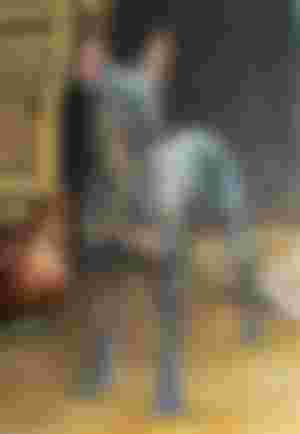
The first known representations of the xoloitzcuintle are the vessels for funerary use called "Colima dogs", fired clay figures, orange-reddish color, found in the shaft tombs of Western Mexico, whose symbolic charge is associated with the passage of man to the underworld, in allegory of the journey made by the God Quetzalcóatl in search of the bones of the giants to create the new man. The marked wrinkles, the visibility of the spine in these pieces, have been some of the characteristics taken into account to identify them with these Mesoamerican dogs.
Quetzalcóatl, on his way to the kingdom of Mictlantecuhtli, transforms himself into the god Xólotl to perform the feat and get out of it successfully. Xólotl, the dog god, is the one who, according to Nahua mythology, is in charge of feeding newly created men. He is also the representative God of fertility, good luck and also a calendar day of good fortune for newborns.
A probable hairless dog is the one that appears in the Madrid Codex as part of a ceremony that in colonial times was described by Fray Diego de Landa for what is currently the Mayan area of Yucatán. Likewise, in the Florentine Codex (from Sahagún's informants), we have the illustration of a xoloitzcuintle dog.
Shortly afterwards, the work of Francisco Hernández (16th century) is produced: Natural History of New Spain, in whose illustrations a xoloitzcuintle appears accompanied by other types of dogs. Subsequently there is a long period of time without any representation. Until this same image is taken by Francisco Javier Clavijero (18th century) for his Historia de Antigua de México, in whose prologue he establishes the following: “The figures of flowers and animals are for the most part copies of those of Hernández ”.
It is during the second half of the 19th century when the xoloitzcuintle reappears as part of a political cartoon related to the Plan of Tuxtepec, by the engraver José Guadalupe Posada, in which a coffin is seen guarded by four starving xoloitzcuintles and, in the first mid-twentieth century, with a linoleum (1944) by Gabriel Fernández Ledezma, corresponding to the nationalist period of our country, where the figure of the dog is observed in front of a rural house, decorated with plants such as nopalillo, a plate and a bone .
As for the mural painting, Diego Rivera is in charge of immortalizing it in the National Palace [8] and the Ministry of Public Education, as well as in the defunct Hotel del Prado. Later, Juan O'Gorman would do the same on one of the walls of the Chapultepec Castle with the mural called La Independencia Nacional (1961).
In easel painting we have, in an outstanding way, the one made by Frida Kahlo. For the second part of the 20th century, Raúl Anguiano and Rufino Tamayo and Francisco Toledo from Oaxaca take it as an important cultural element in their paintings. Anguiano making works inspired by his xoloitzcuintle Tajín; Toledo with his very particular way of turning animals into erotic objects - among them the xolo - and Tamayo with a series of dogs, some of which are reminiscent, due to their characteristics, of the xoloitzcuintle.
Also throughout the 20th century we find the names of several photographers who, by portraying artists and intellectuals of the time, have helped preserve the image of the Mexican dog, among which are Lola Álvarez Bravo, Gisèle Freund, Guillermo Zamora, Héctor García, Mariana Yampolsky and Graciela Iturbide and very recently, thanks to the photos found in the Casa Azul in Coyoacán, we can include Frida Kahlo herself.
Between the last decade of the 20th century and the first decade of the 21st century, an increasingly large group of visual artists have occupied the xoloitzcuintle as a center of creation. In sculpture we find very good producers, one of the best known is Federico Canessi, whose work dedicated to the xoloitzcuintle can be admired in the Dolores Olmedo Patiño Museum, in La Noria, Xochimilco, D.F. Likewise, the sculptor Sergio Peraza has created a whole series of pieces inspired by the xolo using different materials, in addition to making various drawings and being the owner and diffuser of the xoloitzcuintle race; Carol Miller, an American artist, who has dedicated some of her pieces to these dogs. And of course, the fantastic xolos by Andrés Medina where the stylized images of the Mexican dog are present for the admiration of locals and strangers.
